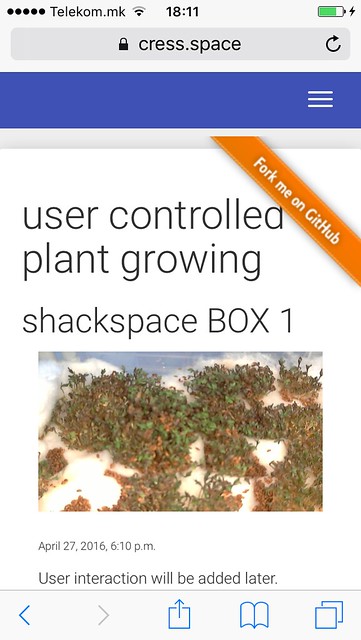cress.space
Global Finalist
cress.space made it to the Global Award Finals (Top 25)
People's Choice Semi-Finalist
cress.space made it to the People's Choice Semi-Finals (Top 25)
Develop a game that simulates conditions in an off-Earth located permanent or temporary colony. The game could be a sandbox that offers the possibility to simulate various facilities that would support a reduced gravity environment far from earth’s atmosphere and magnetosphere. Users could be given power allowances, atmospheric conditions, and in situ resource options (using resources available on site for life support or other needs). The game could include a variety of scenarios including:
- Arranging a GPS-like system on the Moon or Mars to support navigation for the human inhabitants. The simulation could allow the users to explore different solutions such as a constellation of satellites, a network of masts or other Earth based methods at the challenger’s discretion.
- Players could build a habitat that could withstand the Lunar or Martian environment while also taking into consideration that its inhabitants need to have adequate power and supplies, be able to produce food, have locations sleep, live and work.
- Build a Virtual Moon telescope. The simulation could allow the user to conduct a research mission using a telescope on site near their habitat. Explore what instruments make sense for the location of the telescope (and what the user wants to observe). Game players could explore settings such as exposure times or wavelengths to observe. Observations could vary based on the position of the telescope on the Moon or Mars, and the relative position in the sky of the pointed object. After each simulated capture, show an appropriately generated image reflecting the exposure and wavelength settings.

Spoiler: We achieved both
As an optional goal, we want to bring this experiment to the International Space Station to make direct interaction with space based experiments possible for the public. This shall not only be used for education and outreach reasons to show the importance of space research but also harnessing the collective swarm intelligence by the community. With both, science and public can intensify the collaboration for the benefit of all.

will be a future challenge that needs to be tackled today.
you need for autonomous farming capabilities in space.


light the user can activate the LED and
decision is carried out by our space green house.
Setting up the gameis easy. Watch it below!

Status
We are currently growing our first batch of cress in the gree-house prototype to have first data of the experiment and also of the functionality of the hardware.
In the meantime we are setting up the controls for the user and the gamification of the system. Please check

Dear NASA...
"Plants Use Sixth Sense for Growth Aboard the Space Station" (NASA.gov)
Media
You can find more photos on Flickr.com and videos on youtube.com
Main:
- play it now on cress.space
- GitHub: cress-website: https://github.com/aerospaceresearch/cress-website
- GitHub: cress-meta: https://github.com/aerospaceresearch/cress-meta
- GitHub: cress-doc: https://github.com/aerospaceresearch/cress-doc
Hardware:
- bio cress seeds + cotton wool
- IKEA Samla boxes 22l + 11l and cover
- Raspberry Pi 2 + Arduino Duemilanove (for ADC)
- Webcam
- DHT22 (temperature, humidity)
- Hydroponic LED (16W Red/Blue)
- Water pump (no name, aliexpress)
- Waterlevel sensor (soil moisture noname, aliexpress)
- selfmade PCB
- 433 MHz transmitter + radio controlled power socket
Software:
- docker, django
- python
- arduino






